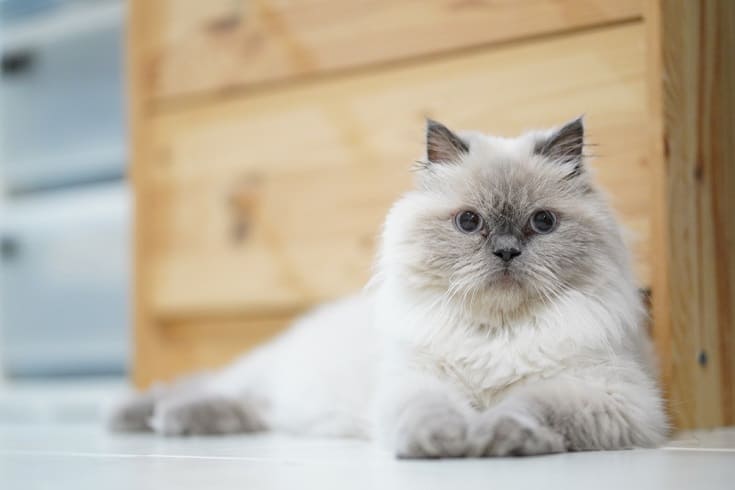Click to Skip Ahead
Are you a feline fanatic who suffers from cat allergies? It might seem like a cruel twist of fate to love an animal you can’t keep as a pet. But if you’ve heard of hypoallergenic cats, you might wonder if they’re a viable solution. Unfortunately, there are only a few breeds that are considered to be hypoallergenic, so your pickings are rather slim.
Himalayan cats are very popular felines known for their sweet tempers and gentle nature. They look similar to Persian cats, only with colored points. However, if you were hoping to bring a Himalayan home as your new companion, you’ll be disappointed to find out that they’re not hypoallergenic. However, there are some Himalayans that produce fewer allergens than others, but that doesn’t mean they’ll make a good pet for someone who suffers from cat allergies.

What is a Hypoallergenic Cat?
For people with cat allergies who just happen to love these furry felines, hypoallergenic cats sound like they’re heaven-sent. Hypoallergenic cats have a reduced impact on cat allergies. If you have cat allergies, a hypoallergenic cat should cause less of a reaction than other breeds.
Approximately 10% of the population is allergic to household pets, with cat allergies twice as prevalent as canine allergies. Cat allergies are caused by an allergen known as Fel d 1, which is found in cat saliva. However, not all cats produce the allergen equally. The cats that release less of the Fel d 1 allergen are considered to be hypoallergenic.
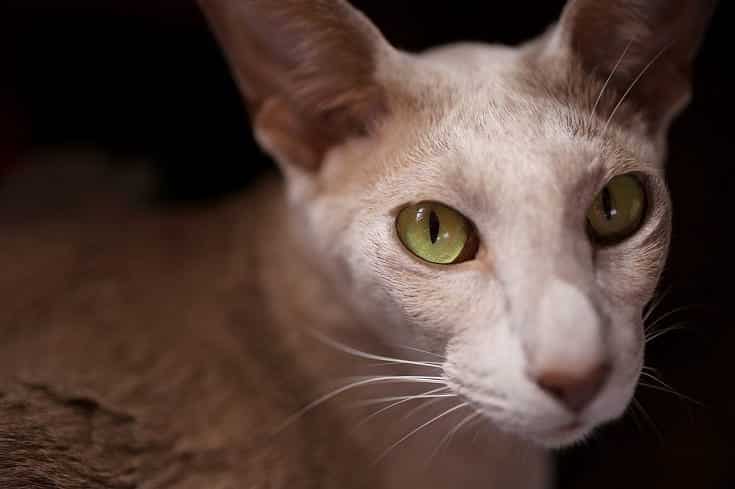
Are Any Cats Truly Hypoallergenic?
The truth is, the Fel d 1 allergen is present in all cats; even those that are considered hypoallergenic. No cat is genuinely 100% hypoallergenic.
Even hypoallergenic cat breeds can cause reactions in people with cat allergies. If you were hoping that hypoallergenic cats were the solution to your problem, you might find this news to be disheartening, but there’s no reason to give up hope yet.
Are Himalayan Cats Bad for People with Cat Allergies?
Quite a few breeds are considered hypoallergenic because they produce less of the Fel d 1 allergen. Unfortunately, Himalayans aren’t one of them, and they’re a poor choice of pet for anyone with cat allergies; even if the allergies are only mild.
Worse, they’re long-haired cats that are known for shedding far more than other breeds. Therefore, Himalayan cats are one of the worst breeds for someone who suffers from cat allergies.
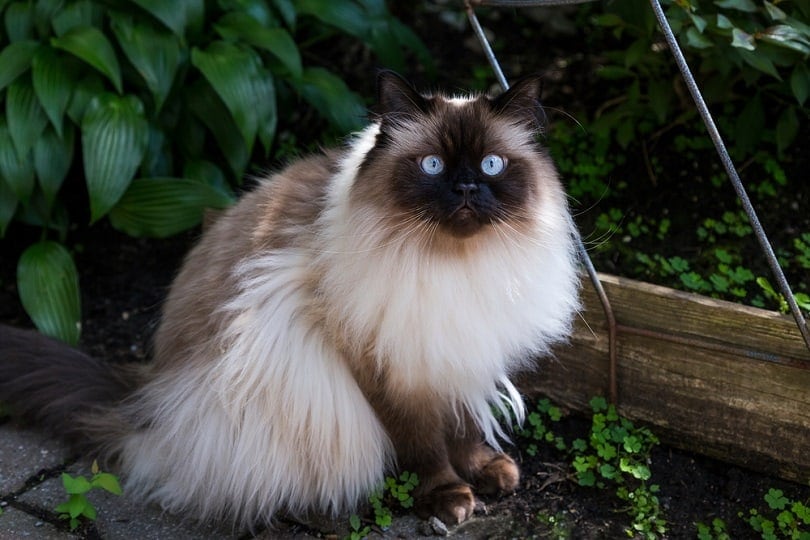
Cats with Fewer Allergens
Even among cats of the same breed, there can be drastic differences in the number of allergens each cat releases. As it turns out, kittens produce fewer allergens than adult cats, and they don’t release enough of the Fel d 1 allergen to cause a reaction in those who only suffer from mild allergies to cats.
As a result, many people bring kittens home and think that they’re not allergic to that kitty. Later on, as the cat ages and begins to produce more Fel d 1, the person mistakenly thinks that they’ve developed a cat allergy that didn’t exist before.
In truth, they’ve been allergic the entire time, but the kitten wasn’t producing enough Fel d 1 to cause a reaction. It’s not just kittens that produce less Fel d 1. Female cats also release less of the Fel d 1 allergen than males. Keep in mind that male and female cats can display different personalities. If a female isn’t preferable to you, you should get a neutered male cat. If a male cat is neutered early enough, it will drastically reduce the amount of Fel d 1 produced.
Hypoallergenic Cat Breeds
Even though females, neutered males, and kittens produce less Fel d 1 than other cats, it’s not usually enough to prevent allergic reactions in those with cat allergies. If you are allergic to cats, your best bet is to get a female or neutered male of a hypoallergenic cat breed so you can be confident that you’ve reduced the number of allergens in your home as much as possible.
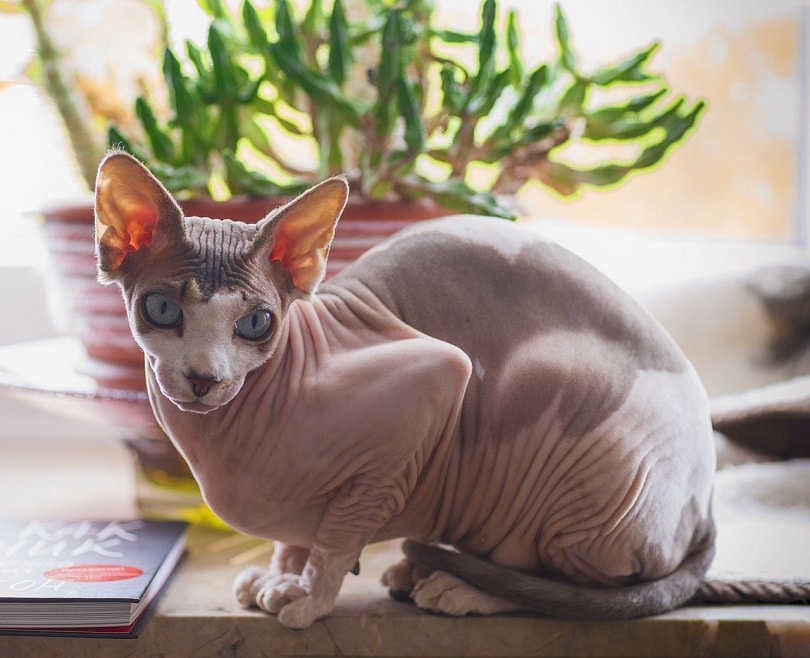
So, which breeds are classified as hypoallergenic? There are 14:
- Balinese
- Bengal
- Burmese
- Colorpoint Shorthair
- Cornish Rex
- Devon Rex
- Javanese
- LaPerm
- Ocicat
- Oriental Shorthair
- Russian Blue
- Siamese
- Siberian
- Sphynx
How to Reduce Cat Allergens
Maybe you have your heart set on a Himalayan cat and can’t settle for any other breed. Or perhaps you want to reduce the number of allergens released by your hypoallergenic cat. Whatever the case, you have several options available that can help reduce the amount of Fel d 1 in your home.
However, it should be noted that you cannot entirely eliminate the allergens. In the United States, 67% of households have pets. But you might be surprised to hear that 90% of all households within the country have detectable dog or cat allergens!
This demonstrates that even if you don’t have any pets, more than likely, your home still contains allergens from dogs or cats. So, how can you reduce the number of pet allergens in your home?
1. Purify the Air
Many of the allergens in your home are simply floating in the air. Luckily, HEPA air purifiers are affordably priced and simple to use. Just activate one in each room, and the number of airborne allergens in your home will decrease.

2. Keep Your Home Dust-Free
If you want to keep the allergens in your home to a minimum, you’ll need to stay on top of dust and dirt. Use spray furniture polish whenever dusting for maximum effect. And make sure to dust daily if you want to avoid allergens.
3. No Pets in the Bedroom
Even though you may love to cuddle up with your cat on the bed, it’s a terrible idea; at least as far as allergens are concerned. The textiles on your bed and in your room, including carpet, curtains, sheets, and more, will all hold onto the allergens from your cat.
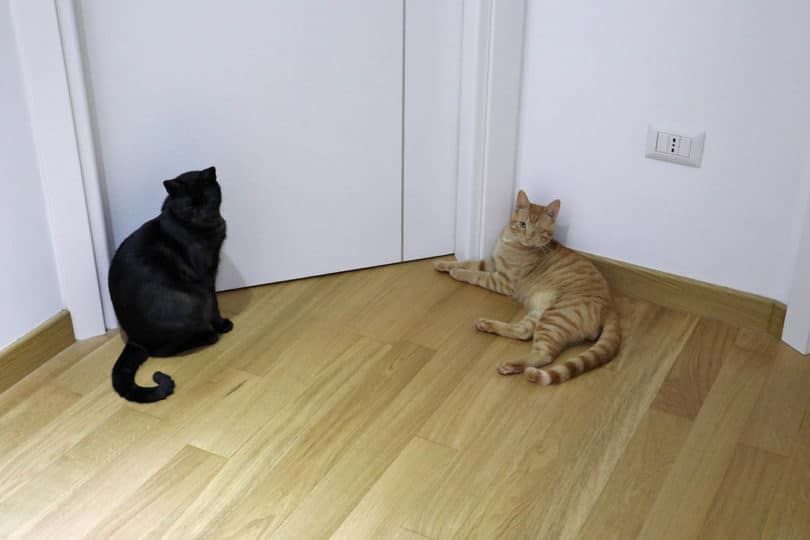
4. Vacuum Daily
One of the simplest ways to get rid of those excess allergens is to vacuum every day. This will help to eliminate any of the allergens that have settled on the floor. Make sure to use a HEPA vacuum with micro-filtration for maximum effect.
5. Keep Your Textiles Clean
Textiles such as fabrics and carpets act as a magnet for allergens. They hold onto allergens for a long time. If you want to avoid allergic reactions, wash your textiles as often as possible. That includes window curtains, furniture, tablecloths, bed linen, clothing, and more.
Conclusion
Just because you suffer from cat allergies doesn’t mean you can’t keep a cat as a pet. Some cats, known as hypoallergenic breeds, release less of the Fel d 1 allergen that causes cat allergies. Hypoallergenic cats will have less of an impact on cat allergies, though severe allergy sufferers may still react.
Unfortunately, Himalayan cats aren’t one of the hypoallergenic breeds. Moreover, they have long coats that shed far more than other breeds, making them one of the worst choices for anyone with allergies. You can look for a hypoallergenic breed instead. If you want to reduce the allergens your cat releases even further, choose a female or have your male cat neutered.
Featured Image Credit: Nattapong Pongpiyapan, Shutterstock

